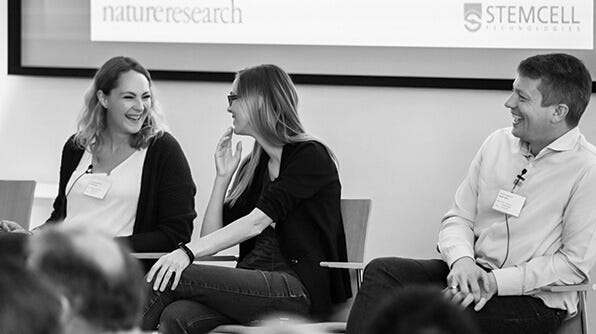Liver Organoids
The liver is a vital organ involved in a wide range of processes such as detoxification, protein synthesis, metabolism, and hormone production. Despite an astounding regenerative capacity in vivo, expansion of liver cells in vitro has remained a challenge. Growth of the hepatic epithelium as organoids provides researchers with a stable population of liver cells for research in a variety of fields including liver biology, disease modeling and toxicity screening.
Explore the resources below for information on the expansion and maintenance of hepatic epithelial cells as organoids.
Organoids: Experts Talk Standardization at Nature Research Round Table
Global organoid experts gathered in London, UK to discuss the current state of the technology, protocol standardization, translation into patient care, nomenclature, and understanding what questions a given organoid culture can and can't answer.
Read Now >Key Applications of Hepatic Organoids
Adult Tissue-Derived Liver Organoids
Huch M, et al. (2015) Long-term culture of genome-stable bipotent stem cells from adult human liver. Cell. 160(1-2): 299-312.
Huch M, et al. (2013) In vitro expansion of single Lgr5+ liver stem cells induced by Wnt-driven regeneration. Nature. 494(7436): 247-50.
Kuijk EW, et al. (2016) Generation and characterization of rat liver stem cell lines and their engraftment in a rat model of liver failure. Sci Rep. 6: 22154.
Nantasanti S, et al. (2015) Disease modeling and gene therapy of copper storage disease in canine hepatic organoids. Stem Cell Reports. 5(5): 895-907.
Disease Modeling and Cancer Research
Broutier L, et al. (2017) Human primary liver cancer-derived organoid cultures for disease modelling and drug screening. Nat Med. 23(12): 1424-1435.
Sampaziotis F, et al. (2015) Cholangiocytes derived from human induced pluripotent stem cells for disease modeling and drug validation. Nat Biotechnol. 33(8): 845-852.
Hindley CJ, et al. (2016) Organoids from adult liver and pancreas: Stem cell biology and biomedical utility. Dev Biol. 420(2): 251-261.
Hepatic Cell Biology
Tarlow BD, et al. (2014) Clonal tracing of Sox9+ liver progenitors in mouse oval cell injury. Hepatology. 60(1): 278-89.
Yimlamai D, et al. (2014) Hippo pathway activity influences liver cell fate. Cell. 157(6): 1324-38.
Kruitwagen HS, et al. (2018) DYRK1A Is a Regulator of S-Phase Entry in Hepatic Progenitor Cells. Stem Cells Dev.
hPSC-Derived Liver Organoids
Takebe T, et al. (2017) Massive and reproducible production of liver buds entirely from human pluripotent stem cells. Cell Rep. 21(10):2661-2670.
Takebe T, et al. (2014) Generation of a vascularized and functional human liver from an iPSC-derived organ bud transplant. Nat Protoc. 9(2): 396-409.
Organoids in Multi-Lineage Model Systems
Takebe T, et al. (2012) Self-Organization of human hepatic organoid by recapitulating organogenesis in vitro. Transplant Proc. 44(4): 1018-20.
Skardal A, et al. (2015) Liver-tumor hybrid organoids for modeling tumor growth and drug response in vitro. Ann Biomed Eng. 43(10): 2361-73.


